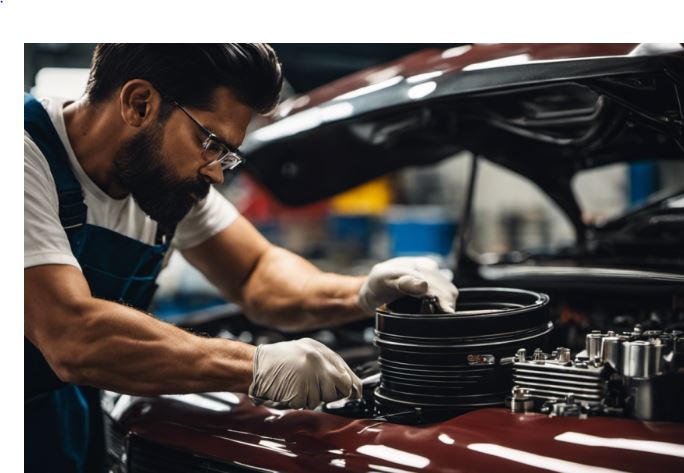Car Greasing: A Complete Guide to Greasing Your Vehicle the Right Way
Maintaining your vehicle’s performance and longevity requires regular care, and one essential aspect is car greasing. Proper greasing ensures that moving parts operate smoothly, reducing friction and wear. This comprehensive guide will walk you through the importance of car greasing, the types of grease to use, how to apply it, and how often to perform this maintenance task.
Why Car Greasing Matters
Greasing is vital for several reasons:
-
Reduces Friction: Lubrication minimizes friction between moving parts, preventing excessive wear.
-
Prevents Corrosion: Grease acts as a barrier against moisture and contaminants, reducing the risk of rust.
-
Enhances Performance: Well-lubricated components function more efficiently, leading to better overall vehicle performance.
-
Extends Component Life: Regular greasing can significantly extend the lifespan of parts like ball joints, tie rods, and suspension components.
Types of Grease and Their Applications
Choosing the right type of grease is crucial. Here are some common types:
-
Lithium-Based Grease: Versatile and widely used for general lubrication purposes.
-
Calcium-Based Grease: Ideal for marine applications due to its water-resistant properties.
-
Aluminum Complex Grease: Suitable for high-temperature environments.
-
Molybdenum Disulfide Grease: Provides excellent lubrication under heavy load conditions.
Each type has specific applications, so refer to your vehicle’s manual to select the appropriate grease.
How to Apply Grease to Your Vehicle
Applying grease involves several steps:
-
Lift the Vehicle: Use a jack to raise the vehicle, ensuring it’s secure before starting.
-
Locate Grease Fittings: Identify the grease fittings (zerk fittings) on components like the steering, suspension, and driveline.
-
Clean the Fittings: Before applying grease, clean the fittings to prevent dirt from entering.
-
Apply Grease: Attach a grease gun to the fitting and pump grease until you see it oozing out, indicating the component is adequately lubricated.
-
Check for Excess: Wipe away any excess grease to prevent attracting dirt.
How Often Should You Grease Your Vehicle?
The frequency of greasing depends on your vehicle and usage:
-
Regular Use: Every 5,000 to 10,000 kilometers.
-
Heavy Use (towing, off-roading): More frequent greasing may be necessary.
Always consult your vehicle’s manual for manufacturer-recommended intervals.

Choosing the Right Vehicle for Your Needs
When selecting a vehicle, consider models that offer advanced features and comfort. Here are some options:
-
Changan Deepal S07: A compact electric SUV offering eco-friendly transportation with a range of 485 km on a full charge. Features include adaptive cruise control, lane-keeping assist, and a 66.8 kWh battery. Learn more
-
Changan Karvaan Plus 1.2MPFI: A versatile minivan equipped with a 1.2L engine, offering ample space and comfort for families. Features include alloy wheels, power steering, and rear AC vents. Explore options
-
Changan Oshan X7 Comfort: A stylish 7-seater SUV featuring a 1.5L engine, panoramic sunroof, and advanced safety features. Ideal for those seeking luxury and performance. Discover more
Conclusion
Regular car greasing is a simple yet effective way to maintain your vehicle’s performance and longevity. By understanding the types of grease, proper application techniques, and maintenance intervals, you can ensure your vehicle operates smoothly. Additionally, selecting the right vehicle that suits your needs and preferences will enhance your driving experience.
For more information on vehicle options and maintenance tips, visit Changan South Motors.























